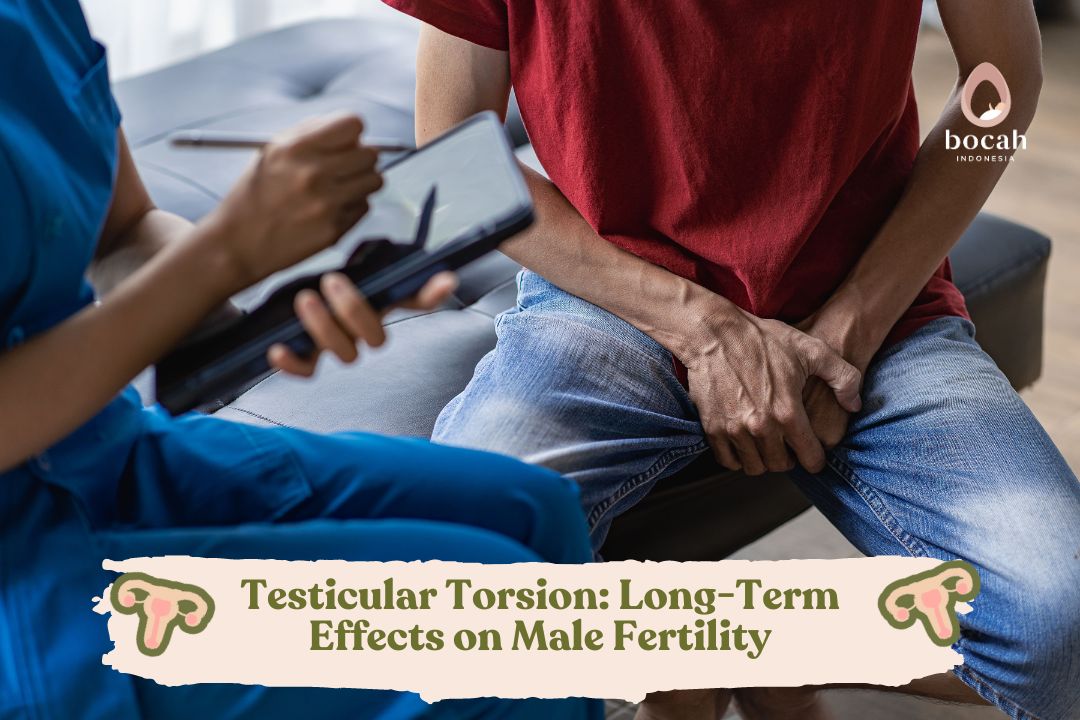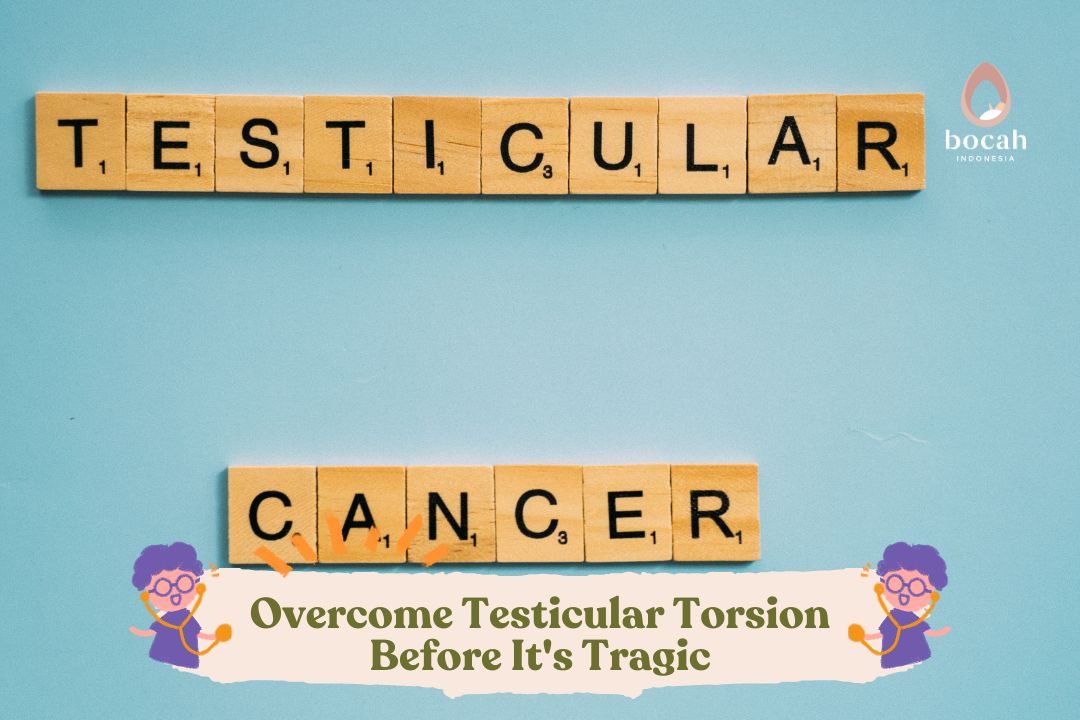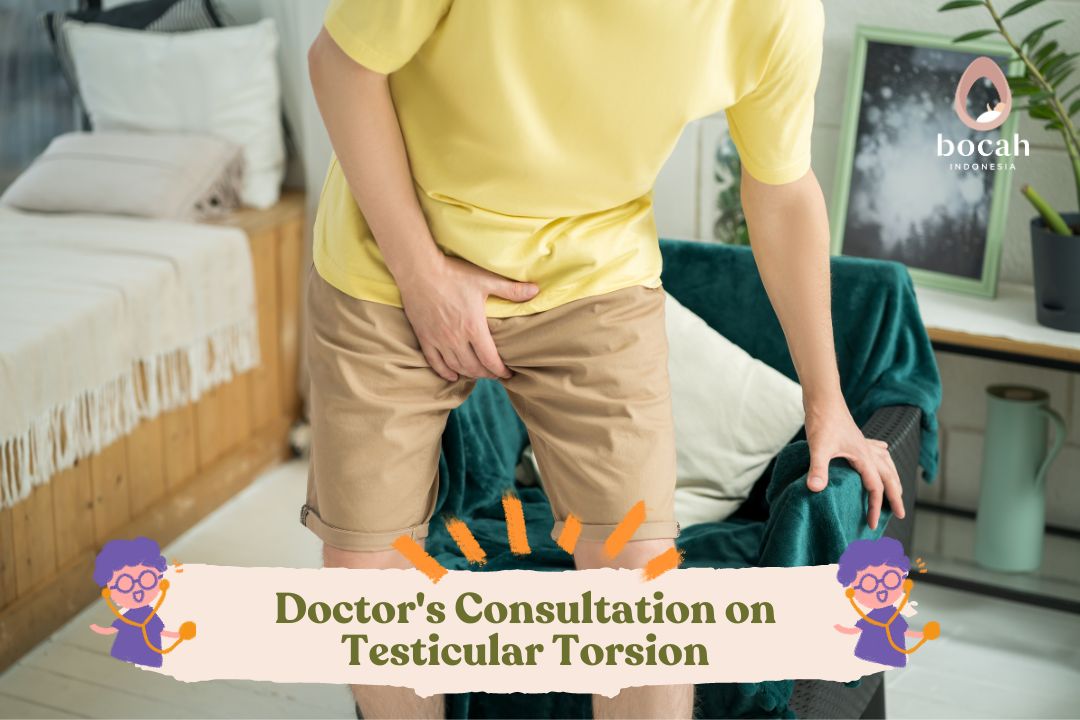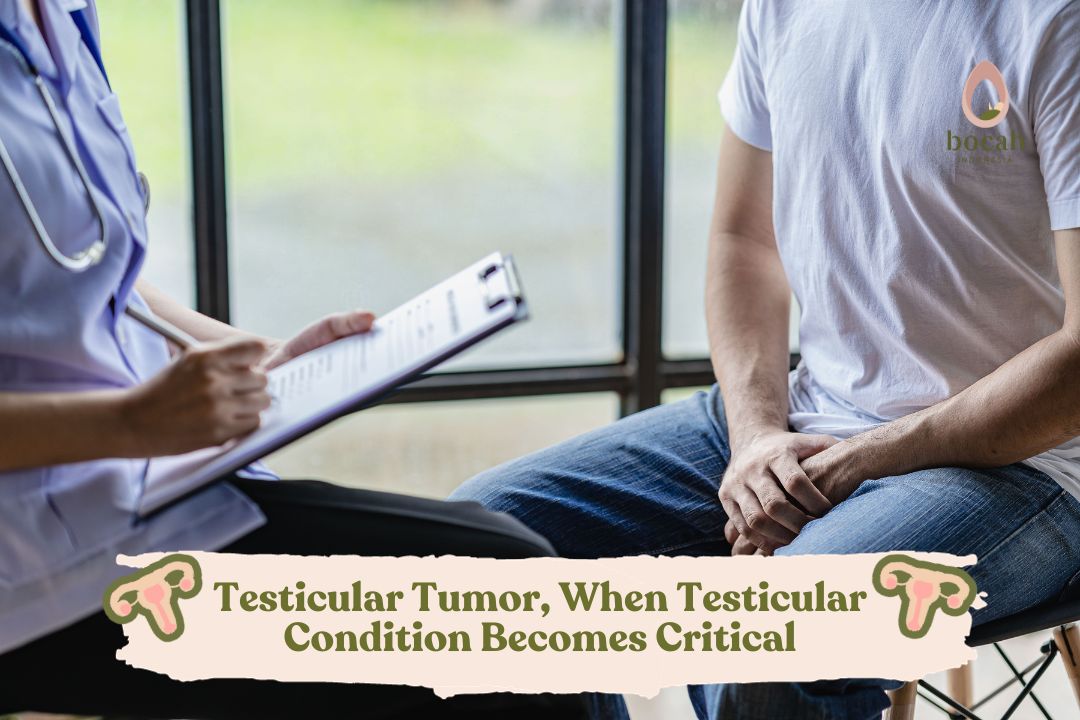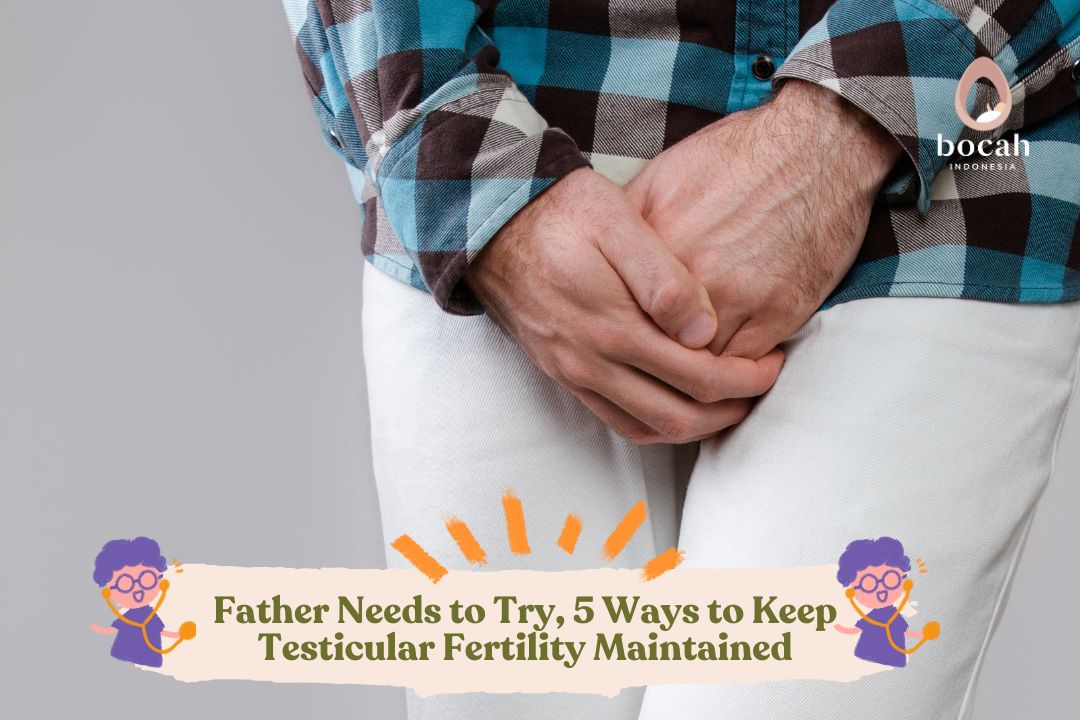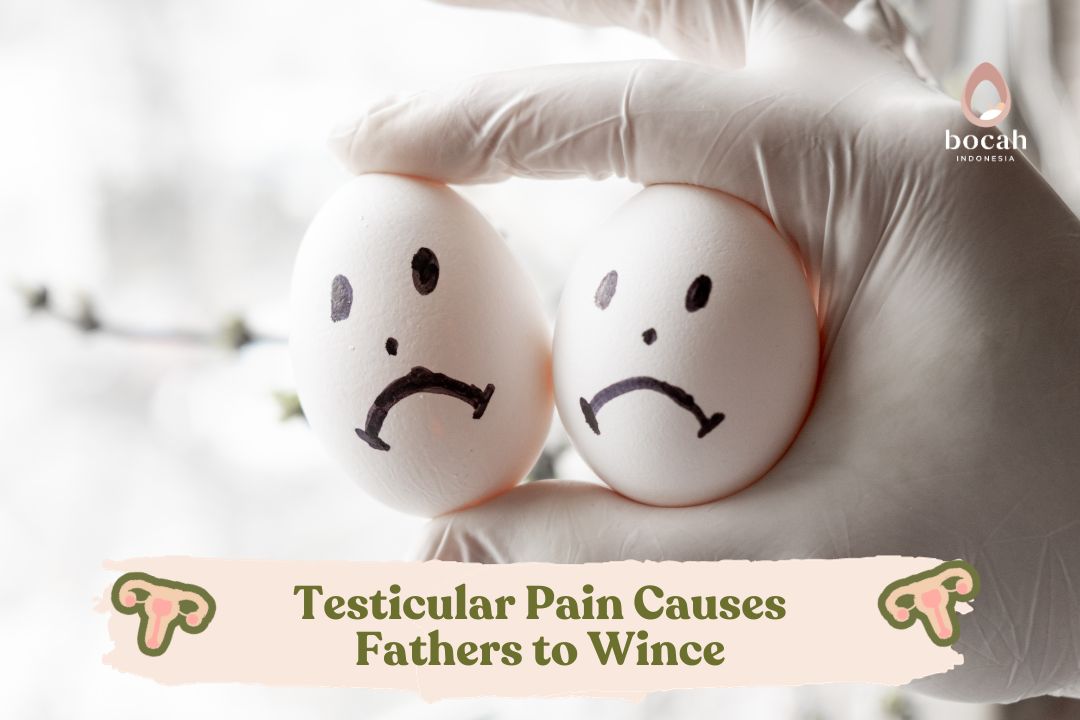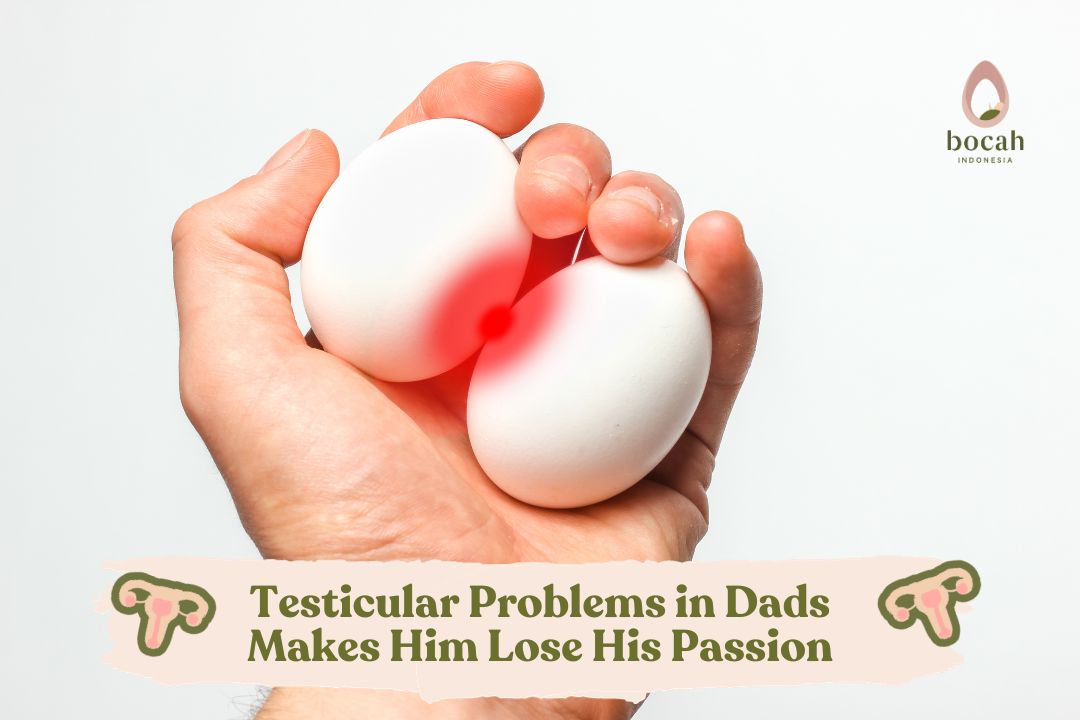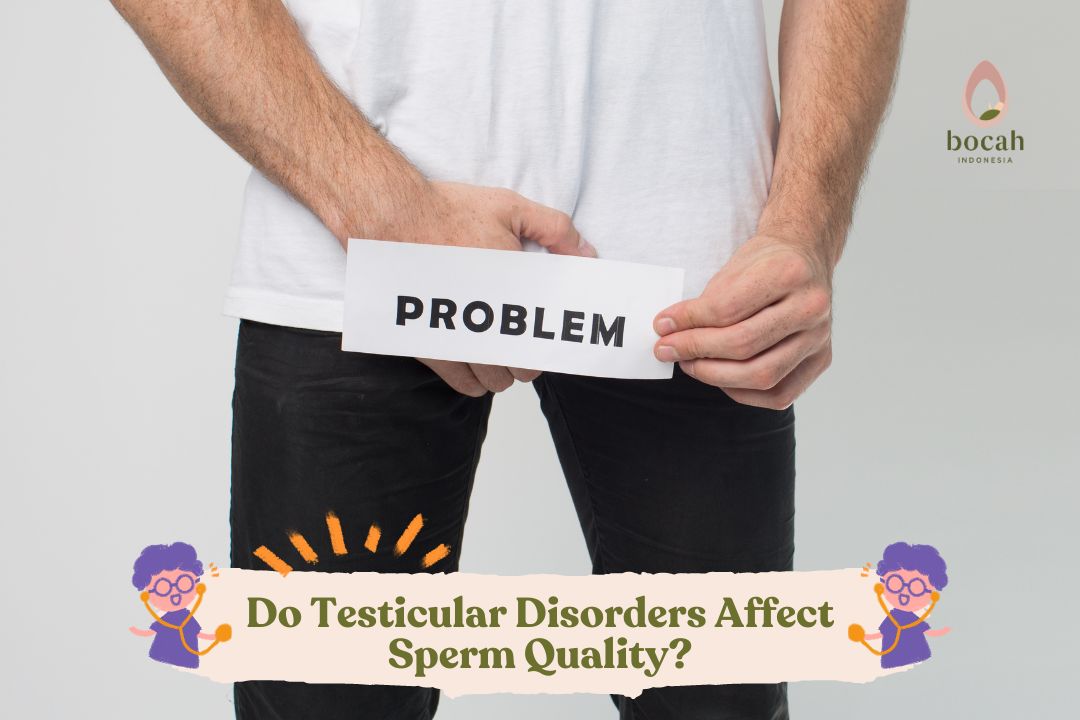The Impact of Testicular Torsion on Fertility

Testicular torsion is an emergency condition where the blood supply to the testicle is pinched off and cut. This condition is very painful and dangerous.
Testicular torsion is a relatively rare urological emergency, especially in children and adolescents. This condition is often overlooked or diagnosed late due to symptoms that are similar to inflammation of the testes or other tissues.
Testicular torsion can cause permanent damage to testicular tissue and potentially become a cause of male infertility. The impact of testicular torsion on fertility can lead to a reduction in sperm count and low sperm motility in more than 50% of patients.
What is Testicular Torsion?
According to the American Urological Association, testicular torsion tends to occur more often on the left side than the right, and only 2 out of 100 men experience twisted testis condition.
Testicular torsion is a rare but serious condition that occurs in about 1 in 4,000 men under the age of 25 and is most common in teenagers between the ages of 12 to 18 years.
Tanya Mincah tentang Promil?
Testicular torsion occurs when the testis twists and wraps the spermatic cord that supplies blood to the scrotum. This twisting cuts off the blood supply to the testicle, causing sudden and severe pain and swelling.
Causes of Testicular Torsion
The causes of testicular torsion can involve various factors that allow the testis to be unattached and able to move freely within the scrotum, with the potential to undergo twisting. Some of these factors include:
Anatomical factors
In some cases, individuals may have looser connective tissue between the testis and the scrotal wall. This can increase the likelihood of testicular torsion.
Newborns
Newborns can also experience testicular torsion because the connective tissue between the testis and scrotum is not fully formed. This condition may even occur before birth.
Trauma or injury
Trauma or injury to the genital area, such as strong blows or impacts, can increase the risk of testicular torsion.
Sports or physical activities
Some cases of testicular torsion are related to intense physical activities, especially those involving rotational movements. Certain sports or activities, such as cycling or playing sports with sudden, rapid movements, can trigger testicular torsion.
Adolescent age
During puberty, changes in the size and shape of the testes can affect the risk of testicular torsion.
Previous testicular torsion
If one has experienced testicular torsion in one testis previously, there is a possibility that it may occur again in the other testis.
Sexual activity
Some cases of testicular torsion have been associated with intense sexual activity or sexual activities involving rotational movements.
Impact of Testicular Torsion on Fertility
Testicular torsion can affect a father’s ability to conceive offspring, especially if medical intervention is not promptly undertaken. Here are the impacts of testicular torsion on fertility:
Poor Sperm Quality
Studies indicate that after 4 years of testicular torsion occurrence, most patients experience issues with sperm motility and morphology. Up to 64% of patients have low sperm motility or morphology, and 39% are categorized as subfertile (sperm count less than 20 million/mL).
Only 14% of patients have semen parameters within the normal range. The duration of torsion also correlates with the amount of motile sperm, highlighting the importance of immediate care when testicular torsion occurs.
Low Testosterone
Some studies suggest that testicular torsion can lead to lower testosterone levels. While it is still possible to conceive with low testosterone levels, this condition can affect sperm production and may also impact libido and sexual function.
Anti-Sperm Antibodies
After surgery to address testicular torsion, anti-sperm antibodies may sometimes still be detected in semen. These anti-sperm antibodies can impair sperm and pose a barrier to fertility.
Fertility Management for Testicular Torsion
Managing fertility due to testicular torsion involves a series of steps aimed at minimizing negative impacts on sperm production and reproductive function. Here are some aspects of fertility management that may be implemented:
Evaluation and Diagnosis
After experiencing testicular torsion, doctors will evaluate fertility conditions. This may involve examining sperm parameters, hormone analysis, and an overall assessment of reproductive health.
Immediate Medical Treatment
It is important to seek immediate medical treatment after testicular torsion occurs. In some cases, surgical procedures such as orchiopexy (repairing twisted testicles) or orchiectomy (removing damaged testicles) may be performed.
Management of Low Sperm Count
If sperm quality is affected, doctors may prescribe treatments or procedures to help improve sperm production. This may include the use of certain medications or other medical interventions.
Monitoring and Follow-up
After initial treatment, continuous monitoring is necessary to track improvements in sperm quality and reproductive function. In some cases, additional interventions may be required.
Counseling and Emotional Support
The fertility management process can evoke stress and concerns. Counseling and emotional support can help patients and their partners cope with the psychological impacts of fertility issues.
Sperm Freezing (Sperm Cryopreservation)
To safeguard against fertility issues or for future family planning purposes, individuals who have experienced testicular torsion may consider sperm cryopreservation. This allows healthy sperm to be stored for future use.
Healthy Lifestyle
Adopting a healthy lifestyle with balanced diet, regular exercise, avoiding smoking, and managing stress can help support overall fertility health.
Each case may vary, and the management of fertility issues due to testicular torsion should be tailored to the specific patient’s condition. Consulting with a reproductive specialist or urology expert will help determine the most appropriate management plan.
If someone has experienced testicular torsion or has a family history of similar issues, it is advisable to consult a doctor to see if they qualify for surgery to prevent testicular torsion in the future. Read more about pregnancy programs only at Bocah Indonesia.
This article has been medically reviewed by Dr. Chitra Fatimah.
Source:
- Nassiri, N. et al. (2021). Testicular Torsion From Bell-clapper Deformity. Urology, 147, pp. 275. https://pubmed.ncbi.nlm.nih.gov/32650017/
- Jckson, F. et al. (2020). The Impact of Testicular Torsion on Testicular Function. The World Journal of Men’s Health, 38(3), pp. 298–307. https://pubmed.ncbi.nlm.nih.gov/31081295/
- National Institute of Health (2022). MedlinePlus. Testicular Torsion.
- Cleveland Clinic (2019). Disease & Conditions. Testicular Torsion.
- Mayo Clinic (2022). Diseases & Conditions. Testicular Torsion.


